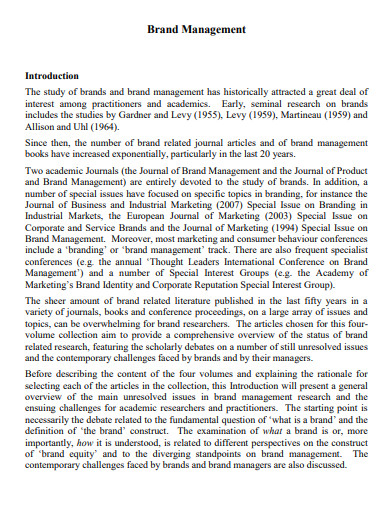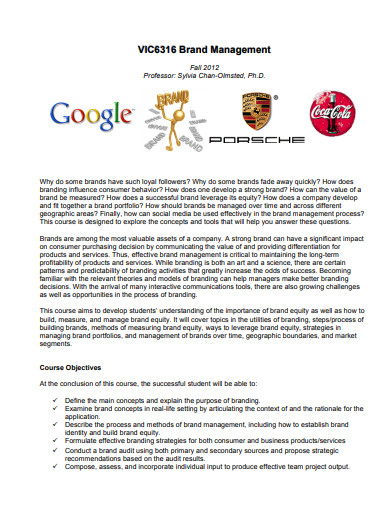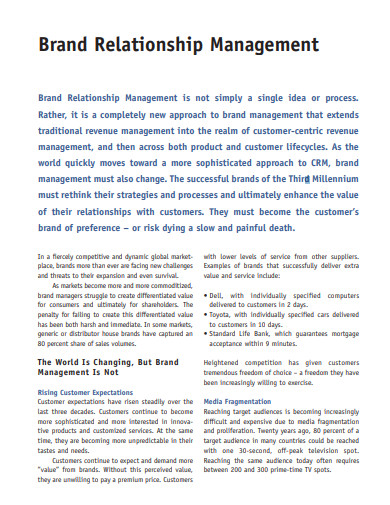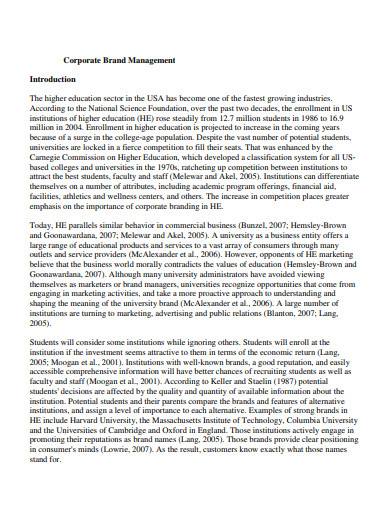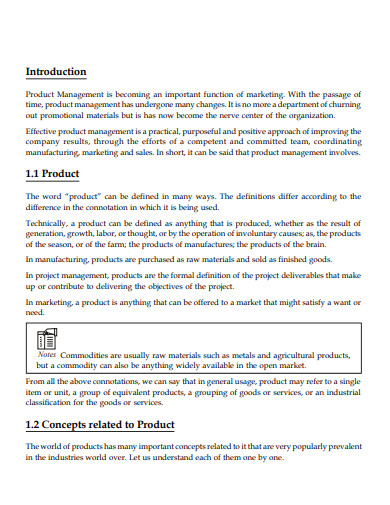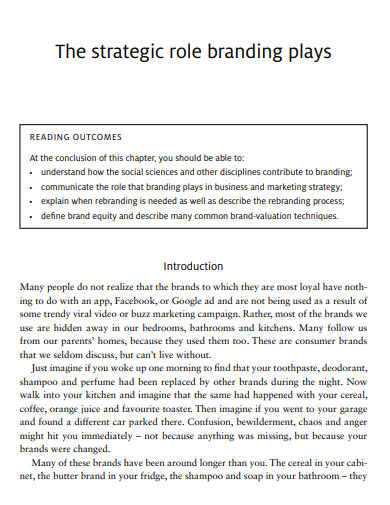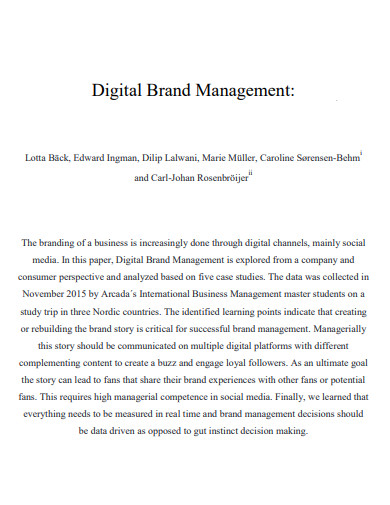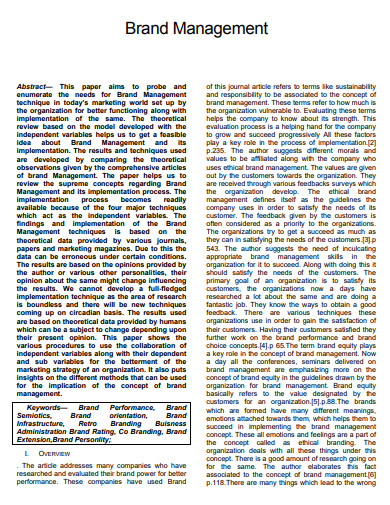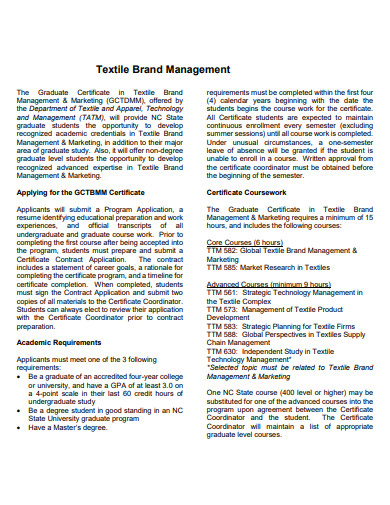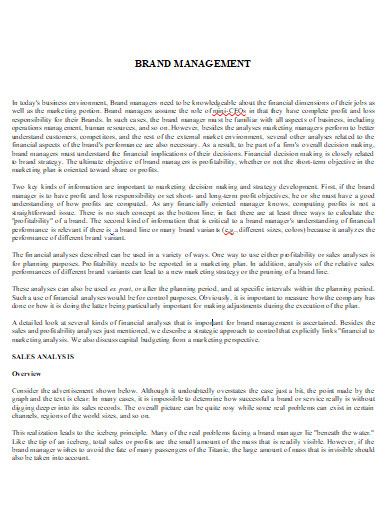Brands have a significant impact on customer engagement, market competition, and corporate management. A powerful brand presence in the global market distinguishes a company’s products from those of its competitors and fosters top – rated for the company’s products or services. A well-established brand must constantly preserve its brand reputation through brand management. Effective brand management raises brand awareness, analyzes and administers brand equity, drives efforts that promote a consistent brand message, detects and integrates new brand products, and places the brand effectively.
10+ Brand Management Samples
Brand management is a broad phrase that refers to marketing techniques that aim to preserve, improve, and raise awareness of a brand’s and its goods’ overall value and reputation over time. A solid brand management plan aids in the development and maintenance of closer relationships with its target audience. Building a loyal customer base improves the perception of a brand’s reputation and related items, resulting in higher profitability and better brand equity. Eventually, today’s most iconic and known brands are specialists in brand management strategy, identifying what branding methods must be used to boost the brand’s value and keep a favorable relationship with its customers.
1. Brand Management
2. Sample Brand Management
3. Brand Relationship Management
4. Corporate Brand Management
5. Advertising Brand Management
6. Product and Brand Management
7. Strategic Brand Management
8. Digital Brand Management
9. Brand Management Example
10. Textile Brand Management
11. Printable Brand Management
Requirements of a Brand Manager
A brand manager is in charge of a brand’s extrinsic and intrinsic properties. The product’s pricing, packaging, logo, accompanying colors, and lettering format are all physical characteristics of a company’s brand.
A brand manager’s responsibility is to examine how a brand is viewed in the market while taking into account intangible characteristics of a brand. Intangible aspects include the consumers’ previous interactions with the brand and their emotional attachment to the product or service. Brand equity is built on a brand’s intangible features.
Brand equity is the price that people are ready to pay over the product’s worth to obtain the brand. Brand equity is an intangible asset created internally, the worth of which is determined solely by consumers’ impression of the brand. If people are able to purchase more for a brand than for a generic brand that fulfills the same duties, the value of brand equity rises. When consumers would prefer find a cheap product that costs much less than brand, the value of brand equity declines.
Special Considerations
Brand management include not just building a brand but also determining which items fall under a company’s brand. When developing new goods to carry the company’s brand or collaborating with analysts to identify which companies to combine with or purchase, a brand manager must always keep its intended market in mind. The difference between success and failure in brand building boils down to continuous innovation. A brand manager who is constantly looking for new ways to keep a brand’s quality high will keep its loyal customers and achieve greater brand affinity than one who is satisfied with the company’s present good name.
FAQs
How do you recognize personal connection?
Branding is based on a variety of intangible components, some of which you can influence and others which you cannot. When a typical customer chooses what a brand means to them, it’s made up of memories, encounters, and a lot more that happens subconsciously. You may be able to influence how the product appears, but they determine what that means. Understanding and capitalizing on the value of a human connection might mean the difference between outperforming the competition and driving consumer loyalty.
What is branding?
Branding is the integration of numerous marketing mix mediums into a cohesive whole in order to provide you with an identity. It is nothing more than attracting your clients’ attention with your brand name. It conveys the appearance of a seasoned, large, and dependable company.
Customers’ value perception, social, and safety risks in purchasing goods/services are reduced by strong brands. With the help of a brand name, shoppers can better picture intangible things. Organizations with a strong brand have a large market share. The brand should be provided adequate support so that it can thrive in the long run. It is critical to manage all brands and establish brand equity over time. Here comes the significance and utility of brand management. Brand management aids in the development of a business image. A brand manager is responsible for the overall performance of the brand.
Related Posts
FREE 5+ Vendor Management Samples in PDF
FREE 10+ Product Portfolio Management Samples in PDF | MS Word
FREE 10+ Management Work Plan Samples in PDF | DOC
FREE 13+ Communication Management Plan Samples in PDF | MS Word
FREE 9+ Time Management Resources Samples in PDF | MS Word
FREE 13+ Product Management Samples in PDF | DOC
FREE 10+ Management Memo Samples in PDF | DOC
FREE 11+ Real Estate Risk Management Samples in PDF
FREE 9+ Human Resources Management Plan Samples in PDF
FREE 7+ Stakeholder Management Strategy Samples in PDF | DOC
FREE 10+ Interest Rate Risk Management Samples in PDF | MS Word
FREE 7+ Investment Management Proposal Samples in PDF
FREE 8+ Currency Risk Management Samples in PDF | MS Word
FREE 10+ Attendance Management Policy Samples in PDF | MS Word
FREE 4+ Capital Market Risk Management Samples in PDF | MS Word

